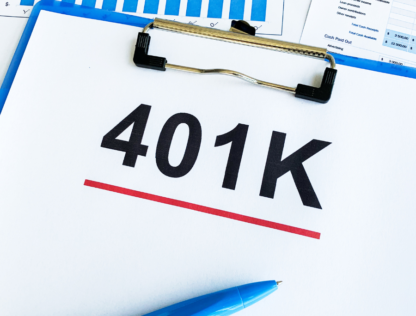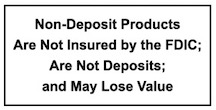
The start of 2025 has presented challenges for many 401(k) investors, with market fluctuations leading to noticeable changes in account balances. To navigate these changes effectively, it’s essential to understand current 401(k) trends, debunk common misconceptions, and implement strategic investment practices.
Current Trends in 401(k) Plans
Enhanced Contribution Limits: In 2025, the IRS has increased the contribution limits for 401(k) plans. Individuals under 50 can now contribute up to $23,500, up from $23,000 in 2024. For those aged 50 and above, catch-up contributions remain at $7,500, allowing a total potential contribution of $31,000. Notably, individuals aged 60 to 63 can make catch-up contributions of $11,250, bringing their total potential contribution to $34,750.
Automatic Enrollment and Contribution Escalation: The SECURE 2.0 Act mandates that new retirement plans starting in 2025 include automatic enrollment with contribution rates set between 3% and 10%. Additionally, there’s an annual automatic increase of 1% until contributions reach at least 10%, but not exceeding 15%. This initiative aims to boost participation and savings rates among employees.
Integration of Health Savings Accounts (HSAs): Employers are increasingly promoting HSAs as a vital component of retirement planning. Paired with high-deductible health plans, HSAs offer tax advantages and a means to cover medical expenses in retirement, addressing the rising concern over healthcare costs.
Common Misconceptions About 401(k) Plans
“My 401(k) is Free of Fees”: Many believe their 401(k) plans are free or that employers cover all costs. In reality, all investment options have associated fees, including administrative and management costs. It’s crucial to understand these fees, as they can impact long-term returns.
“I Should Only Contribute Up to the Employer Match”: While maximizing employer matching contributions is beneficial, limiting contributions to just the match may not suffice for a comfortable retirement. Financial advisors often recommend aiming to save around 15% of your annual income, which may require contributing beyond the employer match.
“My Employer’s Matching Contributions Are Roth Contributions If I Make Roth Contributions”: Regardless of whether you make traditional or Roth contributions, employer matches are typically made on a pre-tax basis. This means that employer contributions and their earnings will be taxed upon withdrawal.
Tips for 401(k) Investors Amid Market Volatility
Maintain a Long-Term Perspective: Market fluctuations are inevitable. Staying focused on long-term investment goals can help mitigate the emotional impact of short-term market movements.
Diversify Your Portfolio: Ensure your 401(k) investments are diversified across various asset classes to spread risk. Regularly review and adjust your allocations to align with your risk tolerance and retirement timeline.
Stay Informed and Seek Professional Advice: Keep abreast of changes in retirement plan regulations and market conditions. Consulting with a financial advisor can provide personalized guidance tailored to your financial situation.
By understanding current trends, dispelling common myths, and adopting informed investment strategies, you can better navigate the complexities of 401(k) plans and work towards a secure retirement.

A health savings account, or HSA, is an account you use to pay for qualified medical, pharmacy, dental and vision expenses and save on taxes. HSAs give you more ways to save on taxes and health care expenses, now and in the future. Contributions are 100% tax deductible up to the annual limit, just like an IRA.
- Accounts accumulate interest over the years tax-deferred, allowing you to decide when to spend and when to save.
- Withdrawals are tax-free as long as they are used for qualified medical expenses, even in retirement.
- Any money left in the savings account earns interest and is yours to keep year over year, unlike a Flexible Spending Account (FSA), there is no ‘use it or lose it.’
- If you use an HSA to pay for unqualified medical expenses prior to age 65, the tax penalty is 20% of the HSA distribution. Funds spent for non-qualified purposes are also subject to income tax.
- Total combined employer and employee contributions to an HSA can’t exceed the annual limit set by the IRS. Please consult your tax professional for more information.

The SECURE 2.0 Act, enacted in December 2022, introduced significant reforms to enhance retirement savings and accessibility. Building upon the original SECURE Act of 2019, this legislation aims to expand retirement plan participation, increase savings opportunities, and simplify plan administration.
Key Provisions of the SECURE 2.0 Act
- Automatic Enrollment and Escalation: Beginning in 2025, most new 401(k) and 403(b) plans are required to automatically enroll eligible employees at a contribution rate of at least 3%, increasing annually by 1% until reaching between 10% and 15%. Employees have the option to opt out or adjust their contribution rates.
- Enhanced Catch-Up Contributions: Starting in 2025, individuals aged 60 to 63 can make increased catch-up contributions to their retirement plans, up to $10,000 or 50% more than the regular catch-up amount, whichever is greater. These amounts will be indexed for inflation.
- Student Loan Payment Matching: Effective from 2024, employers can make matching contributions to retirement accounts based on an employee’s qualified student loan payments, helping those repaying student loans to simultaneously save for retirement.
- Emergency Savings Withdrawals: Starting in 2024, participants can withdraw up to $1,000 annually from retirement accounts for emergency expenses without incurring the typical 10% early withdrawal penalty. These withdrawals can be repaid within three years.
- 529 Plan Rollovers to Roth IRAs: Beginning in 2024, beneficiaries of 529 college savings plans can roll over up to $35,000 into a Roth IRA over their lifetime, provided the 529 account has been open for at least 15 years.
- Required Minimum Distribution (RMD) Age Increase: The age at which individuals must begin taking RMDs from retirement accounts increased from 72 to 73 in 2023 and will further rise to 75 in 2033.
- Roth Employer Contributions: Employers can now offer employees the option to receive vested matching or non-elective contributions on a Roth (after-tax) basis, providing more flexibility in retirement planning.
- Saver’s Match: Starting in 2027, the existing Saver’s Credit will transform into a federal matching contribution, where eligible individuals receive a 50% match on retirement contributions up to $2,000, deposited directly into their retirement account.
- Part-Time Worker Eligibility: The Act reduces the service requirement for part-time workers to participate in employer retirement plans from three consecutive years with at least 500 hours of service to two years, effective in 2025.
- Emergency Savings Accounts: Employers can offer pension-linked emergency savings accounts, allowing non-highly compensated employees to contribute up to $2,500 on a Roth basis. These accounts provide penalty-free access to funds for emergencies.
These provisions collectively aim to bolster retirement readiness by making saving more accessible and flexible for a broader range of individuals.

